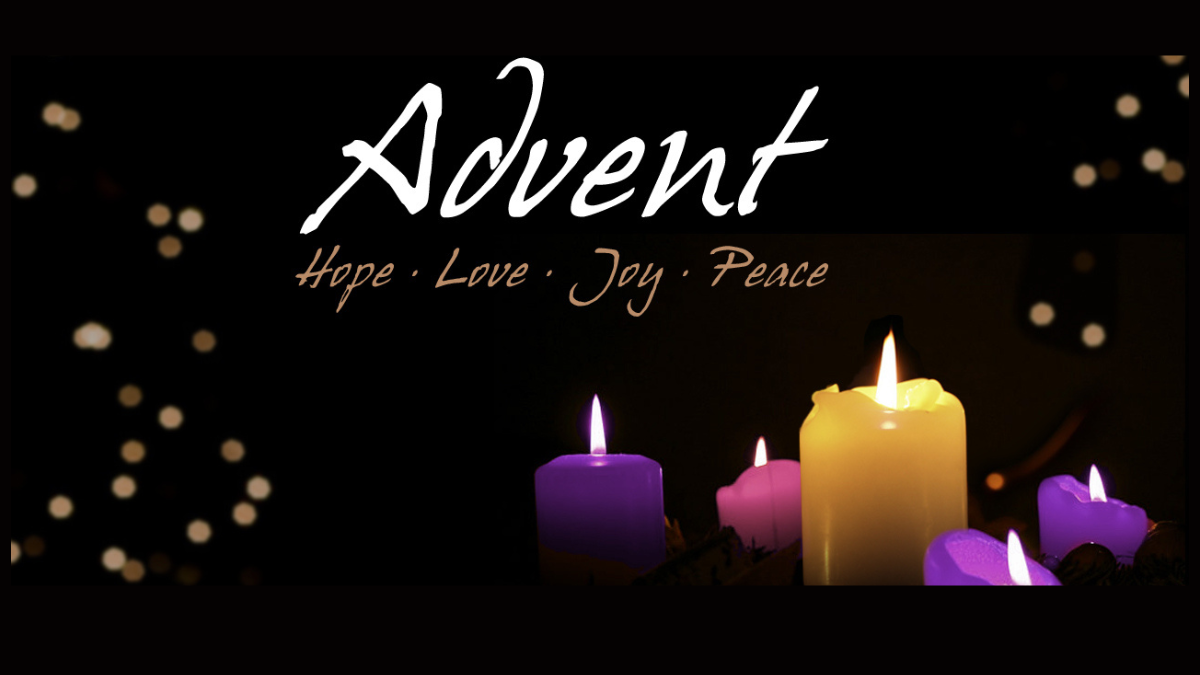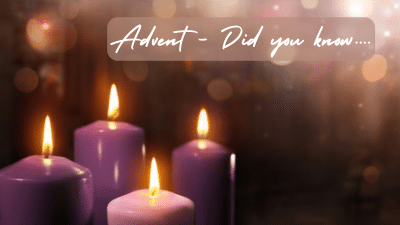
Advent Readings
Advent is a season to prepare for Christmas and the coming of Christ. It also as a season when our mind and heart are directed to await Christ’s second coming at the end of time.
Click the image above to learn more!

Advent Family Fun
During the Advent Season set aside special time for the family for prayer, projects, and fun! Explore our “Family Fun” page for a host a ideas for this Advent Season.
Click the image above to learn more!

Advent Spirituality
The Advent Season is also a season busy with all manner of activities and things on the “to-do” list. It is necessary to be intentional to create time and space for your spiritual life.
Click the image above to learn more!

Advent - Did you know?
Learn about the liturgical season of Advent, the history of the season, how the Advent wreaths and calendars became part of the traditions.
Advent Videos
The History of the Development of Advent
The development of a liturgical season preparatory to Christmas is Western in its origins and celebration. It is not known when the period of preparation for Christmascalled Advent began, but we have a sense of the dual origins of the themes/focus of Advent: the end time and the second coming of Christ, as well as preparing for the celebration of Christmas, the commemoration of the first coming of Christ.
Our first accounts of Advent come from Spain and Gaul. In the canons of the Synod of Saragossa (380), the laity are reminded of their obligation to be in church on a daily basis from December 17 through January 6. This does establish the practice of Advent worship, but affirms and re-emphasizes the importance of the period of preparation that was already in practice
In 5th century Gaul we hear of an ascetical fast of three days a week beginning on or near St. Martin of Tours’ feast day (November 11) and extending to Christmas. While fasting on Wednesdays and Fridays was an ancient Christian tradition (Didache, 1st century), the addition of Monday appears to mark off the season of Advent. The ascetical fasting may possibly be a counter practice to the ribald celebrations leading up to the Roman festival of Saturnalia.
The Gallican fast, on the other hand, may have found its origins in the Celtic monastic practice of triannual forty-day fasts, a practice which soon became mandatory for laity also. In Gaul, the season of Advent (varying from four to six weeks) took on a penitential dimension paralleling the early medieval Lent, with the use of the color purple, the dropping of the Gloria and the Alleluia from eucharistic liturgies, and the dropping of the Te Deum from the liturgy of the hours. The adoption of Celtic penitential practices and the rising emphasis on judgment at the parousia provide emphasis to the Gallican season of Advent, exemplified by the sequence Dies Irae (Day of Wrath), a hymn composed for the beginning of Advent.
In Rome, the origins of Advent seem to be a combination of Gallican influence and indigenous tradition. There is already evidence of a pre-Christmas fast at the end of the 4th century in Rome, a fast that may not have any relation to Christmas. Also related to the time of year but perhaps originally independent of Christmas are the Ember days, quarterly fast times of recollection. Gregory the Great (late 6th century) witnesses a liturgical tradition of four Sunday Masses and three Ember day Masses in preparation for Christmas, which stresses the coming commemoration rather than the judgment themes seen in the Gallican tradition. In the 7th century, the composition of the poetic “O Antiphons” exemplifies this preparation for the solemnity of the nativity, and by the 8th and 9th centuries, the sacramentaries reveal the position of Advent at the beginning of the church year, replacing Christmas as the head of liturgical new year. The liturgical traditionalism of Rome made itself felt in the widespread adoption of the Roman four week Advent (replacing the longer Gallican and Spanish Advents) but by the 12th century Rome was influenced by the penitential aspects of the Galilean Advent and dropped the Gloria from the Mass, retaining the Alleluia as a vestige of an earlier non-penitential approach to Advent.
Since approximately the 13th century, the usual liturgical color in Western Christianity for Advent has been violet. On the third Sunday of Advent, Gaudete Sunday, rose may be used instead, referencing the rose used on Laetare Sunday, the fourth Sunday of Lent. A rose coloured candle in Western Christianity is referenced as a sign of joy (Gaudete) lit on the third Sunday of Advent.
What is an Advent Wreath?
As Christians, we use symbols to express visually the basic tenets of our faith and as reminders of the pilgrimage of our life in Christ. Symbols can have heightened meaning for us when associated with particular seasons of that journey. One such symbol is the Advent wreath.
The Advent wreath has its roots in the pre-Christian practices of northern Europe. People sought the return of the sun in the dark time of the year (at the winter solstice) by lighting candles and fires. As early as the Middle Ages, Christians used fire and light to represent Christ’s coming into the world. Using this same symbolism, the Advent wreath developed a few centuries ago in Germany as a sign of the waiting and hopeful expectation of the return in glory of our Lord Jesus Christ. The wreath, a circle, came to represent the eternal victory over death through Jesus Christ. The evergreens were a sign of the faithfulness of God to God’s people, even in death, and the lighted candles were a reminder of the light of Christ brought into the world.
This symbolism can be just as strong for us today. As is the case with all symbols, they speak most loudly to remind us of God’s promises of life when they are drawn directly out of our daily experience and environment. One should consider using only natural materials from God’s creation when making an Advent wreath. Evergreens come in many varieties and may be treated with a flame retardant substance. Branches of holly, laurel, and other green shrubs, which retain their freshness longer than pine, may also be used. The circular shape, a symbol of eternal life, is most important. Using an alternative shape, such as a log, would diminish the meaning of the symbol, which is no longer a circle.
History of the Advent Calendar
Advent calendars (in one form or another) were adapted some time in the 19th century by German Lutherans as a way to mark the days of the season leading up to Christmas. By the early 20th century, calendars were being manufactured and published in Germany, aimed at delighting kids during the holidays. The various calendars were religious in nature and often secular with an emphasis on Santa Clause (Saint Nicholas / Sankt Nikolaus). During WWII the Nazi regime tried to repurpose it for their nationalistic goals, but to no avail.
Following the war, Christian-themed Advent calendars made their way stateside thanks the GIs who sent them home to their families. They got a boost in popularity when Newsweek published a photograph of President Dwight D. Eisenhower’s grandchildren with an Advent calendar in 1953. For the record, the first chocolate Advent calendar was produced by Cadbury in 1958. Advent calendars have remained popular in the years since, often with features that help children count down the days to Christmas,
A specifically Christian variation called a “Jesse Tree” combines the Christmas tree with an Advent calendar, taking its cues from Isaiah 11:1, which many Christians take to be a prophecy about Jesus: “There shall come forth a shoot from the stump of Jesse, and a branch from his roots will bear fruit.” Jesse was the father of King David, who is said to be an ancestor of Jesus, and a tree depicting this lineage was often the subject of stained-glass windows in churches. Ornaments with symbols that tell the Christmas story are placed on the Jesse Tree each day until, by Christmas, it’s full.
Though Advent customs differ, they all circle back to adventus: the anticipation of something. Advent calendars are designed for anticipating the arrival of Christmas Day.